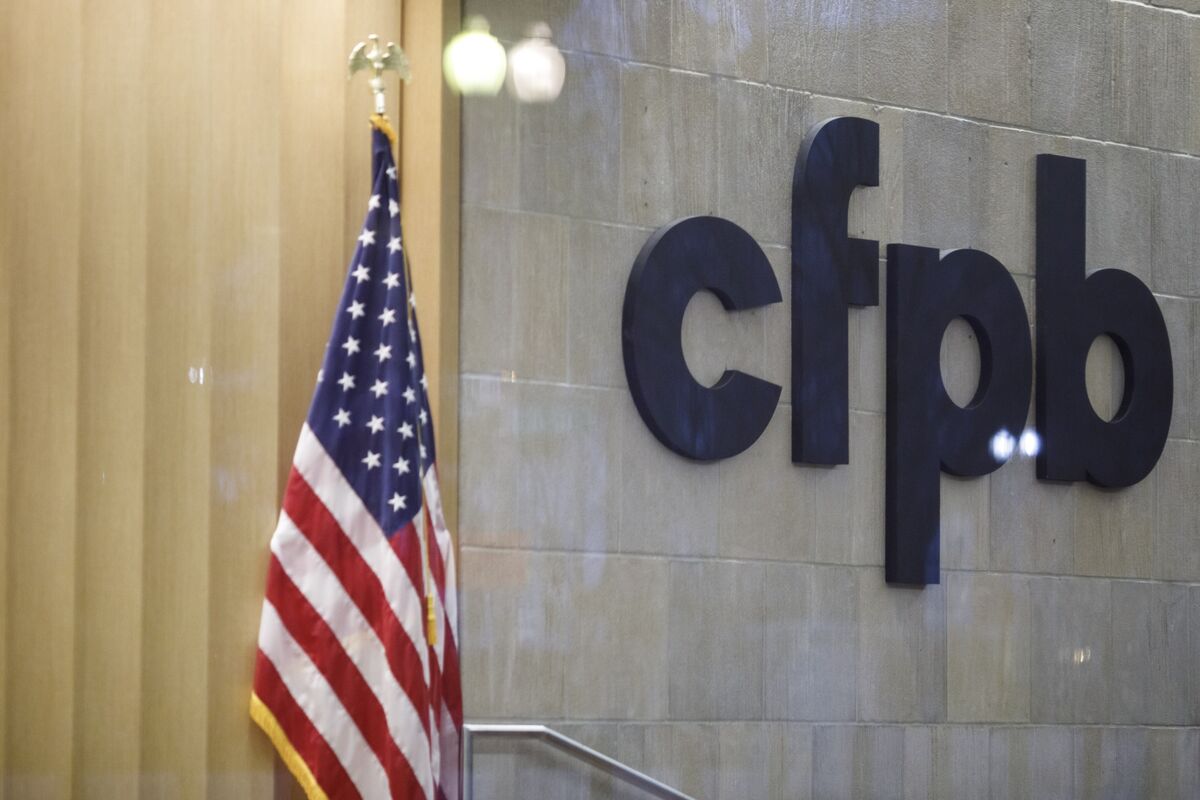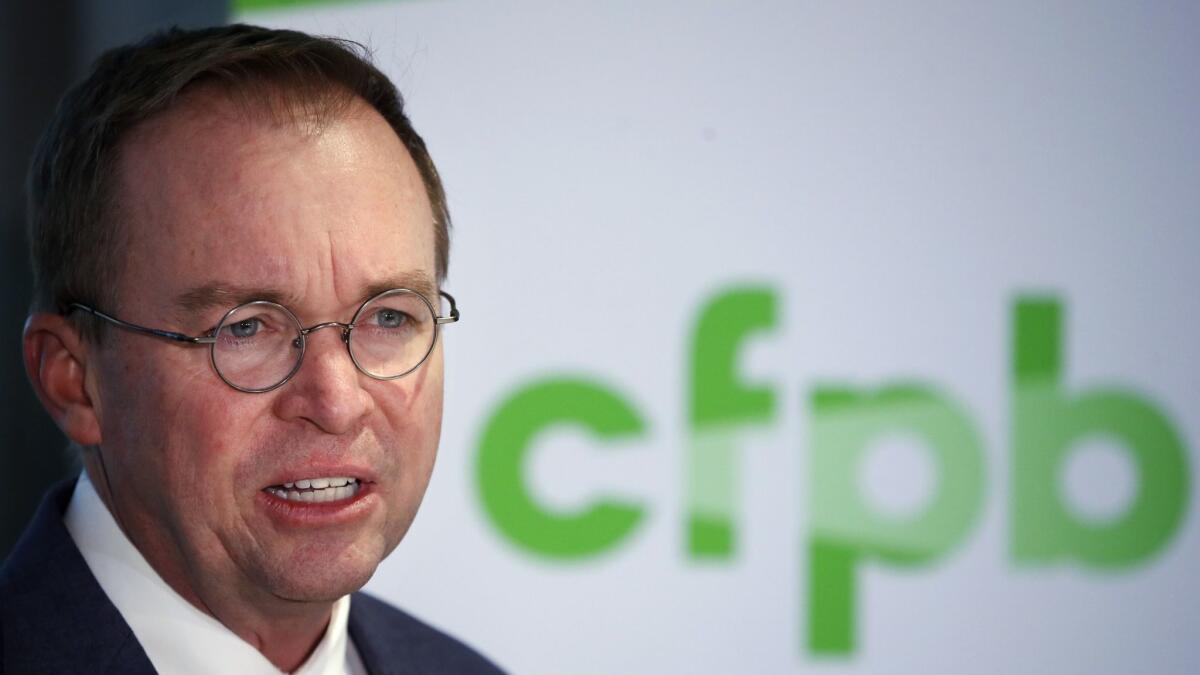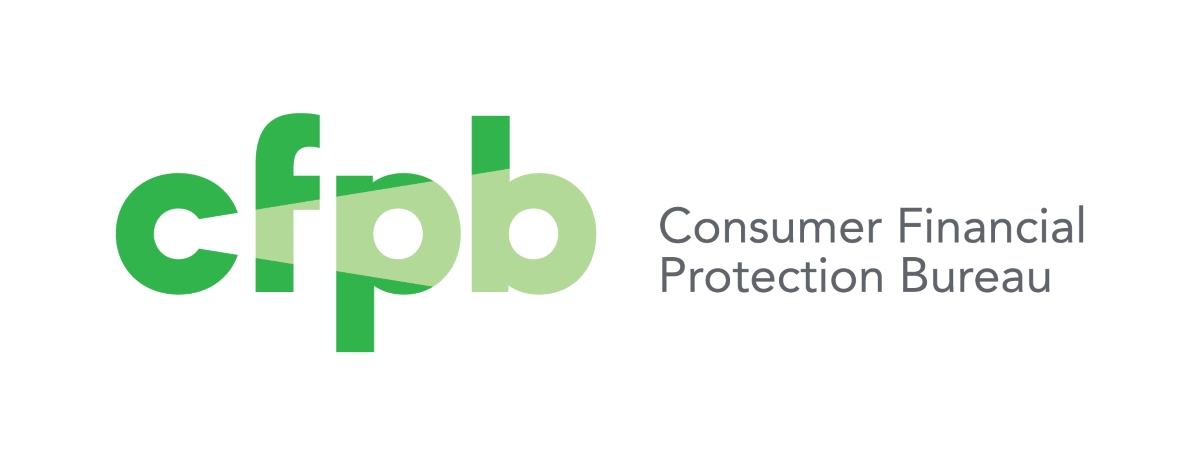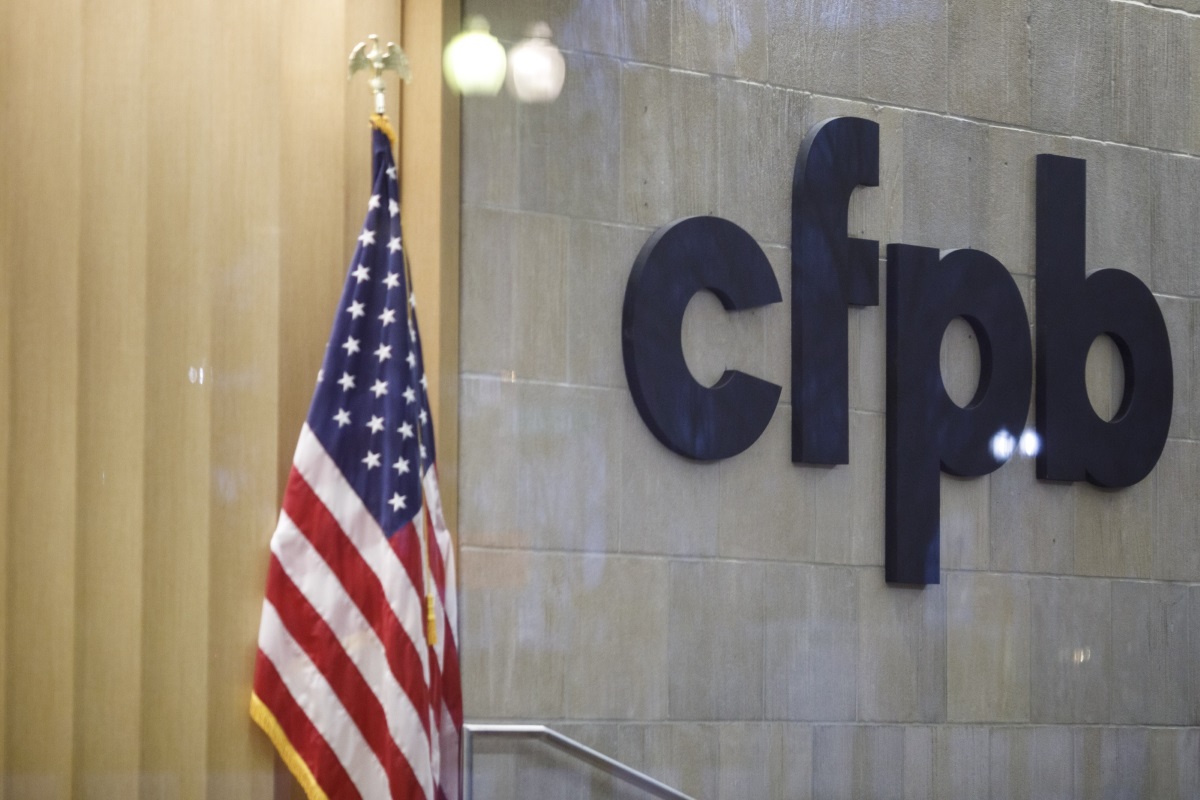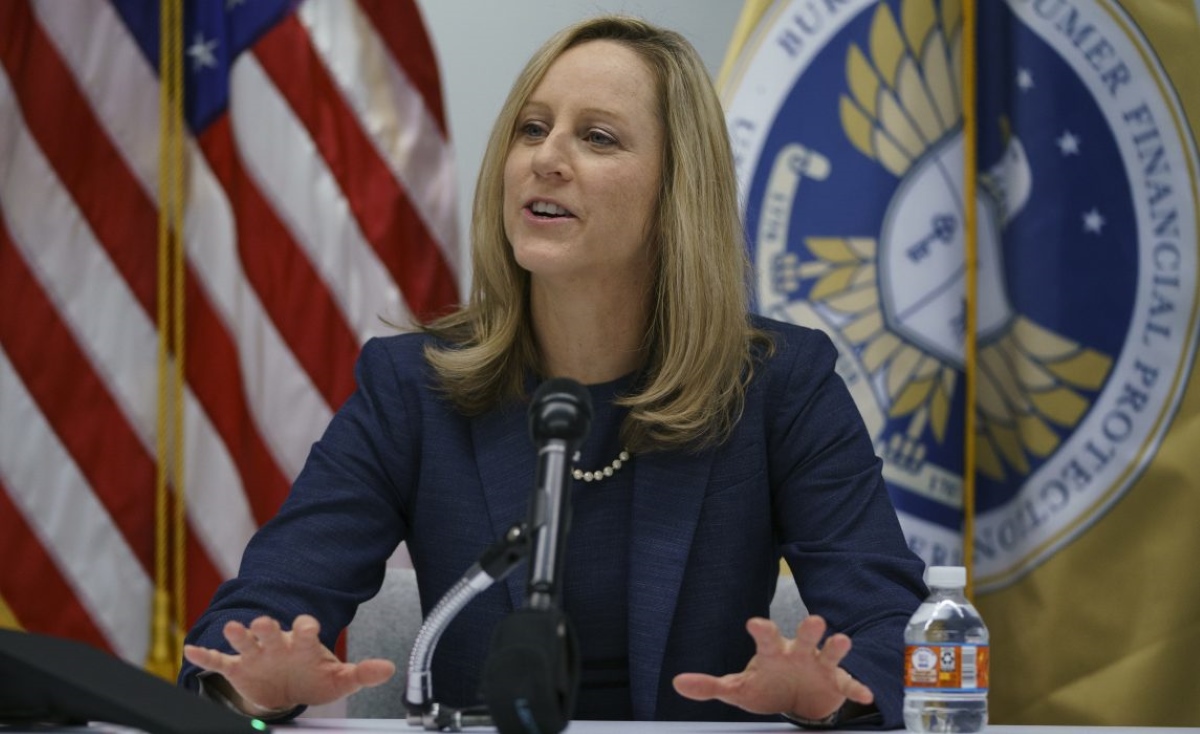Home>Finance>How Much Has The Consumer Financial Protection Bureau Protect Consumers


Finance
How Much Has The Consumer Financial Protection Bureau Protect Consumers
Modified: March 1, 2024
Discover how the Consumer Financial Protection Bureau safeguards consumers in the finance industry and learn about their endeavors to protect your financial interests.
(Many of the links in this article redirect to a specific reviewed product. Your purchase of these products through affiliate links helps to generate commission for LiveWell, at no extra cost. Learn more)
Table of Contents
- Introduction
- Establishment of the Consumer Financial Protection Bureau
- The Role and Responsibilities of the Consumer Financial Protection Bureau
- The Impact of the Consumer Financial Protection Bureau on Consumer Protection
- Evaluating the Effectiveness of the Consumer Financial Protection Bureau
- Criticisms and Controversies Surrounding the Consumer Financial Protection Bureau
- Proposed Amendments and Future Outlook for the Consumer Financial Protection Bureau
- Conclusion
Introduction
The Consumer Financial Protection Bureau (CFPB) is an independent agency within the United States government that was established in 2010 with the goal of protecting consumers in the financial marketplace. It was created as a response to the 2008 financial crisis, which exposed numerous predatory practices and unfair treatment of consumers by financial institutions.
The CFPB’s primary mission is to ensure the fair treatment of consumers and to promote transparency and competition in the financial industry. The agency has the authority to enforce federal consumer financial laws, conduct investigations, and provide educational resources to empower consumers in making informed financial decisions.
Over the years, the CFPB has been instrumental in bringing about significant changes in the financial sector. Its focus on consumer protection has resulted in improved regulations, stricter enforcement actions against fraudulent practices, and increased awareness among consumers about their rights and responsibilities.
One of the key aspects of the CFPB’s work is its role in regulating financial institutions such as banks, mortgage lenders, credit card issuers, and payday lenders. Through its enforcement actions and supervisory examinations, the CFPB aims to prevent unfair and deceptive practices, promote transparency in financial products, and ensure that consumers are treated fairly.
In addition to regulating financial institutions, the CFPB also plays a crucial role in consumer education. Through its website, publications, and outreach programs, the CFPB provides valuable information and resources that empower consumers to make well-informed financial decisions.
The establishment of the CFPB has been a significant step towards safeguarding consumer interests in the financial marketplace. However, the agency has not been without its share of controversies and criticisms. Some argue that the CFPB has overstepped its authority and implemented regulations that are burdensome for financial institutions. On the other hand, consumer advocates believe that the agency needs more power and resources to effectively tackle predatory practices.
In this article, we will delve deeper into the role and responsibilities of the Consumer Financial Protection Bureau, evaluate its impact on consumer protection, discuss criticisms and controversies surrounding the agency, and explore future possibilities for the CFPB.
Establishment of the Consumer Financial Protection Bureau
The Consumer Financial Protection Bureau (CFPB) was established under the Dodd-Frank Wall Street Reform and Consumer Protection Act in 2010. This legislation was enacted in response to the financial crisis of 2008, which revealed numerous abuses and predatory practices by financial institutions that harmed consumers.
Prior to the creation of the CFPB, consumer protection in the financial industry was fragmented and spread across various agencies. The Dodd-Frank Act aimed to consolidate and improve consumer protection by establishing a single, dedicated agency focused on safeguarding the interests of consumers.
The CFPB operates as an independent agency within the Federal Reserve System, with its own director appointed by the President and confirmed by the Senate. This independent structure was designed to ensure that the agency remains free from political interference and can effectively carry out its mission of consumer protection.
One of the unique features of the CFPB is its broad jurisdiction over a wide range of financial products and services. The agency has the authority to oversee and regulate banks, credit unions, mortgage lenders, payday lenders, debt collectors, credit card issuers, and other financial institutions. This comprehensive jurisdiction allows the CFPB to address consumer protection issues across different sectors of the financial industry.
The establishment of the CFPB also introduced new regulatory powers to protect consumers. The agency has the authority to write and enforce regulations, conduct investigations and examinations, and take enforcement actions against entities that violate consumer financial laws. This enforcement power gives the CFPB teeth to hold financial institutions accountable for their actions and to ensure compliance with federal consumer protection regulations.
Overall, the creation of the CFPB marked a significant milestone in consumer protection. By consolidating authority and resources into a single agency, the CFPB has the ability to be more proactive and effective in addressing consumer concerns. The agency’s focus on transparency, fairness, and accountability has reshaped the financial landscape, leading to increased scrutiny of financial practices and better protection of consumers’ rights.
The Role and Responsibilities of the Consumer Financial Protection Bureau
The Consumer Financial Protection Bureau (CFPB) plays a crucial role in ensuring the fair treatment of consumers and promoting transparency in the financial marketplace. The agency has been entrusted with a wide range of responsibilities that focus on protecting consumers from harmful practices, educating consumers about their rights, and enforcing federal consumer financial laws.
One of the primary responsibilities of the CFPB is to regulate and supervise financial institutions to ensure that they comply with federal consumer protection laws. The agency conducts regular examinations of banks, mortgage lenders, credit card issuers, and other financial entities to assess their compliance with regulations. This supervisory role helps to identify and address any potential risks or violations that could harm consumers.
The CFPB also has the power to enforce federal consumer financial laws and take legal action against entities that engage in unfair, deceptive, or abusive practices. The agency has the authority to investigate complaints, initiate lawsuits, and impose penalties or seek restitution for consumers who have been harmed. By holding financial institutions accountable for their actions, the CFPB strives to deter predatory behaviors and ensure that consumers are treated fairly.
In addition to its regulatory and enforcement functions, the CFPB is committed to empowering consumers through education and access to information. The agency provides resources and tools to help consumers make informed financial decisions. This includes educational materials, guides, and online tools that cover a variety of financial topics such as mortgages, credit cards, student loans, and debt management. By increasing financial literacy and awareness, the CFPB aims to reduce the likelihood of consumers falling victim to deceptive practices.
Another important role of the CFPB is to collect and analyze consumer complaints about financial products and services. The agency operates a Consumer Complaint Database, which allows consumers to submit complaints and share their experiences with financial institutions. This data is then used to identify trends and patterns of potential consumer harm, inform regulatory actions, and drive industry-wide improvements in consumer protection.
Furthermore, the CFPB undertakes research and market monitoring to identify emerging risks and trends that could impact consumers. This includes analyzing industry practices, market trends, and consumer behavior to better understand the challenges faced by consumers in the financial marketplace. This knowledge helps the CFPB develop targeted initiatives and policies to address these challenges and protect consumers.
Overall, the CFPB’s role is multi-faceted, encompassing regulatory oversight, enforcement of consumer financial laws, consumer education, complaint resolution, and market monitoring. By fulfilling these responsibilities, the agency aims to ensure a fair and transparent financial marketplace while empowering consumers to make informed financial decisions.
The Impact of the Consumer Financial Protection Bureau on Consumer Protection
The Consumer Financial Protection Bureau (CFPB) has had a profound impact on consumer protection since its establishment. Through its regulatory efforts, enforcement actions, and consumer education initiatives, the CFPB has been instrumental in safeguarding consumers from predatory practices and promoting fair treatment in the financial marketplace.
One of the key ways in which the CFPB has made an impact is through its enforcement actions against financial institutions. The agency has taken legal action and imposed penalties on entities that engaged in unfair, deceptive, or abusive practices. These enforcement actions send a clear message that harmful practices will not be tolerated and help to deter similar behavior in the financial industry. Additionally, the CFPB has secured billions of dollars in restitution for consumers who have been harmed by these practices, providing a means of redress for those affected.
Moreover, the CFPB’s regulations and rules have strengthened consumer protection in various areas of the financial marketplace. For example, the CFPB introduced the Ability-to-Repay rule, which requires mortgage lenders to assess a borrower’s ability to repay a loan before extending credit. This rule helps prevent risky lending practices that contributed to the housing crisis of 2008. The CFPB has also implemented rules related to debt collection, prepaid cards, payday lending, and student loans, among others, to ensure fair practices and transparency.
The CFPB’s focus on consumer education has been instrumental in empowering individuals to make informed financial decisions. The agency provides resources, guides, and tools that help consumers understand and navigate complex financial products and services. By increasing financial literacy and awareness, the CFPB enables consumers to protect themselves against deceptive practices and make choices that align with their best interests.
The CFPB has also played a significant role in developing and improving industry-wide standards for transparency and fairness. By setting clear expectations for financial institutions, the agency has encouraged the adoption of practices that prioritize consumer protection. This has led to increased disclosure of fees and terms, more accessible information about financial products, and greater accountability among financial institutions to act in the best interests of consumers.
In addition, the CFPB’s Consumer Complaint Database has become an invaluable resource for identifying and addressing consumer concerns. The database allows consumers to submit complaints about financial products and services, providing the CFPB with real-time data on potential problems. This information has been used to inform enforcement actions, initiate investigations, and drive market monitoring efforts to protect consumers.
Overall, the CFPB has had a significant positive impact on consumer protection. Through its enforcement actions, regulations, education initiatives, and complaint resolution efforts, the agency has worked to level the playing field in the financial marketplace and ensure that consumers are treated fairly. However, ongoing vigilance and continued support for the agency’s mission are necessary to maintain and enhance the gains made in consumer protection.
Evaluating the Effectiveness of the Consumer Financial Protection Bureau
Evaluating the effectiveness of the Consumer Financial Protection Bureau (CFPB) requires considering several factors, including its achievements in protecting consumers, its impact on industry practices, and its ability to adapt to changing financial landscapes.
One measure of the CFPB’s effectiveness is its record of enforcement actions against financial institutions. The agency has successfully taken legal action and imposed penalties on entities that engage in unfair, deceptive, or abusive practices. These actions have resulted in billions of dollars in restitution for harmed consumers and serve as a deterrent for industry players to engage in predatory behavior. Furthermore, the CFPB’s enforcement actions have brought attention to previously hidden deceptive practices, leading to increased scrutiny and accountability within the financial industry.
Another important aspect is the extent to which the CFPB’s regulations and rules have improved consumer protection. The agency has introduced and implemented rules across various sectors, such as mortgage lending, debt collection, and prepaid cards, to ensure fair practices and transparency. The effectiveness of these regulations can be evaluated by their impact on industry behavior, the reduction of harmful practices, and the enhancement of consumer rights and safeguards. Additionally, the CFPB’s ability to adapt and update regulations to address emerging risks and challenges is crucial in ensuring continued effectiveness.
The CFPB’s role in consumer education is also an important factor in evaluating its impact. By providing resources and tools to enhance financial literacy and awareness, the agency empowers consumers to make informed decisions and protect themselves from deceptive practices. The effectiveness of this educational effort can be measured by the extent to which consumer knowledge and awareness have increased, leading to improved financial decision-making and reduced instances of consumer harm.
Furthermore, the CFPB’s complaint resolution process is an essential component of its effectiveness. By offering a platform for consumers to submit complaints about financial products and services, the agency can identify patterns of abuse or misconduct. The effectiveness of this process lies in its ability to resolve complaints satisfactorily and address systemic issues identified through the data gathered. Additionally, the CFPB’s responsiveness to consumer complaints and its ability to take appropriate action based on the information received are key indicators of its effectiveness in protecting consumers.
Lastly, the CFPB’s effectiveness can be evaluated by assessing its adaptability to changing financial landscapes and emerging risks. As the financial industry evolves and new challenges arise, the CFPB must be able to identify and address emerging risks promptly. This includes staying up to date with advancements in technology, evolving financial products and services, and changes in consumer behaviors. The effectiveness of the CFPB in this regard can be measured by its ability to anticipate and mitigate risks, implement timely regulatory changes, and provide relevant guidance to consumers and the industry.
Overall, evaluating the effectiveness of the CFPB requires considering its enforcement actions, the impact of its regulations, its effectiveness in consumer education and complaint resolution, and its ability to adapt to changing financial landscapes. By assessing these factors, we can gain a comprehensive understanding of the agency’s accomplishments and areas for improvement in protecting consumers and promoting fairness in the financial marketplace.
Criticisms and Controversies Surrounding the Consumer Financial Protection Bureau
The Consumer Financial Protection Bureau (CFPB) has not been immune to criticisms and controversies since its establishment. While the agency has made significant strides in consumer protection, several concerns have been raised regarding its structure, authority, and impact on the financial industry.
One of the main criticisms is that the CFPB possesses an excessive amount of power and lacks sufficient oversight and accountability. Critics argue that the agency’s single-director structure, appointed by the President, undermines the checks and balances necessary for a government agency. They suggest that the CFPB should be subject to greater accountability measures, such as a bipartisan commission or congressional oversight, to ensure that its actions and regulations are fair and balanced.
Another point of contention is the perceived overreach of the CFPB in its regulatory authority. Some argue that the agency has imposed burdensome regulations on financial institutions, which could stifle innovation and restrict access to credit for consumers. Critics claim that the CFPB’s regulations, while aimed at protecting consumers, create compliance burdens that disproportionately affect smaller institutions and limit their ability to compete with larger entities.
Furthermore, concerns have been raised about the CFPB’s lack of transparency and due process in its enforcement actions. Critics point out that the agency has broad authority to investigate and penalize financial institutions without clear guidelines or defined processes. This lack of transparency can lead to uncertainty and hinder industry players’ ability to comply with regulations, potentially impeding innovation and growth within the financial sector.
There have also been debates about the constitutionality of the CFPB’s structure and funding. Opponents argue that the agency’s funding from the Federal Reserve, rather than traditional congressional appropriations, violates the constitutional separation of powers. This argument has led to legal challenges and calls for reforms in the agency’s funding mechanism.
Additionally, some industry stakeholders believe the CFPB’s regulations and enforcement actions create unintended consequences. They argue that the agency’s strict rules could limit access to credit for consumers with lower credit scores or less traditional financial profiles. This concern stems from the belief that the CFPB’s focus on consumer protection may hinder the ability of financial institutions to serve certain segments of the population.
It is important to note that these criticisms and controversies are not universal, and there are varying opinions on the CFPB’s effectiveness and impact. Supporters of the agency argue that the establishment of the CFPB was necessary to provide a dedicated focus on consumer protection in the financial industry. They believe that the CFPB’s actions have been essential in holding powerful financial institutions accountable and providing recourse for consumers harmed by unfair practices.
Ultimately, the criticisms and controversies surrounding the CFPB highlight the ongoing debate about the appropriate balance between consumer protection and industry innovation and competitiveness. As the financial landscape continues to evolve, addressing these concerns and finding common ground will be crucial in shaping the future direction and effectiveness of the Consumer Financial Protection Bureau.
Proposed Amendments and Future Outlook for the Consumer Financial Protection Bureau
The Consumer Financial Protection Bureau (CFPB) has been the subject of discussions regarding possible amendments and the future direction of the agency. These proposals aim to address concerns, improve accountability, and enhance the effectiveness of the CFPB in protecting consumers and regulating the financial industry.
One proposed amendment is the transition from a single-director structure to a bipartisan commission. Advocates argue that a commission structure, similar to other federal regulatory bodies, would provide greater oversight and reduce the concentration of power in a single individual. This change could enhance transparency, promote diverse perspectives, and ensure a more balanced approach to consumer protection and industry regulation.
Additionally, there have been calls for the CFPB to align its funding mechanism with the traditional congressional appropriations process. Currently, the agency is funded through a direct allocation from the Federal Reserve, which some argue undermines the agency’s accountability to lawmakers. Shifting to a regular appropriations process would subject the CFPB’s budget to congressional scrutiny and allow for greater oversight in its allocation of resources.
Another proposal is to refine the CFPB’s regulatory framework to balance consumer protection with industry innovation and competitiveness. Critics argue that the CFPB’s regulations can have unintended consequences, such as limiting access to credit for certain segments of the population. Advocates suggest the agency should focus on fostering responsible innovation and creating a regulatory environment that encourages competition while still ensuring robust consumer safeguards.
In terms of enforcement, there have been calls for the CFPB to provide more clarity and due process in its investigative and enforcement actions. Critics argue that the agency’s broad authority can lead to uncertainty and hinder compliance efforts by regulated entities. Addressing these concerns could involve establishing clearer guidelines, providing opportunities for industry input in the rulemaking process, and ensuring transparency and fairness in enforcement procedures.
The future outlook for the CFPB also includes adapting to changing technologies and emerging risks in the financial industry. As digital financial services continue to evolve, the CFPB will need to stay abreast of technological advancements and develop regulations and guidance that provide appropriate consumer protections without stifling innovation. This may involve collaboration with industry stakeholders, conducting research on emerging risks, and timely updates to existing regulations.
Furthermore, the CFPB’s focus on consumer education and empowerment is expected to continue to be a priority going forward. The agency can further enhance its educational initiatives by leveraging technological tools, reaching underserved populations, and addressing the financial challenges faced by vulnerable communities. Building financial literacy and awareness will remain essential in empowering consumers to navigate the complex financial marketplace effectively.
Overall, the proposed amendments and future outlook for the CFPB aim to strike a balance between consumer protection and industry vitality. Enhancing accountability, refining regulations, providing clarity and due process, and adapting to emerging risks are crucial for the agency’s continued effectiveness. By addressing these areas, the CFPB can further solidify its role as a champion of consumer protections while promoting innovation and competition within the financial industry.
Conclusion
The Consumer Financial Protection Bureau (CFPB) has played a pivotal role in protecting consumers and promoting transparency in the financial marketplace since its establishment. Through its regulatory efforts, enforcement actions, consumer education initiatives, and complaint resolution process, the CFPB has made significant strides in safeguarding consumer rights and ensuring fair treatment by financial institutions.
Despite the criticisms and controversies surrounding its structure, authority, and impact, the CFPB has undeniably brought about important changes. The agency’s enforcement actions have held financial institutions accountable for unfair and deceptive practices, resulting in billions of dollars in restitution for affected consumers. Its regulations have improved industry practices, increased transparency, and enhanced consumer protection in various sectors.
Furthermore, the CFPB’s focus on consumer education has empowered individuals to make informed financial decisions, reducing their vulnerability to predatory practices. The complaint resolution process has provided consumers with a platform to voice their concerns and seek redress, while also enabling the agency to identify systemic issues and take appropriate action.
Moving forward, proposed amendments and the future outlook for the CFPB offer opportunities for enhancement and improvement. Introducing a bipartisan commission, refining the regulatory framework, and ensuring due process and transparency in enforcement actions are potential steps towards addressing concerns and enhancing the agency’s effectiveness.
As the financial industry continues to evolve and new challenges emerge, the CFPB must adapt and remain vigilant to protect consumers effectively. This includes embracing technology, addressing emerging risks, and ensuring that regulations keep pace with changing market dynamics.
In conclusion, the CFPB has been a critical player in promoting consumer protection, fairness, and transparency in the financial marketplace. While there are ongoing debates and discussions about its structure and authority, the agency’s accomplishments and initiatives have undoubtedly improved the landscape for consumers. By continuing to balance consumer protection with industry vitality and innovation, the CFPB can further evolve and solidify its role as a vital safeguard for consumers in the years to come.

